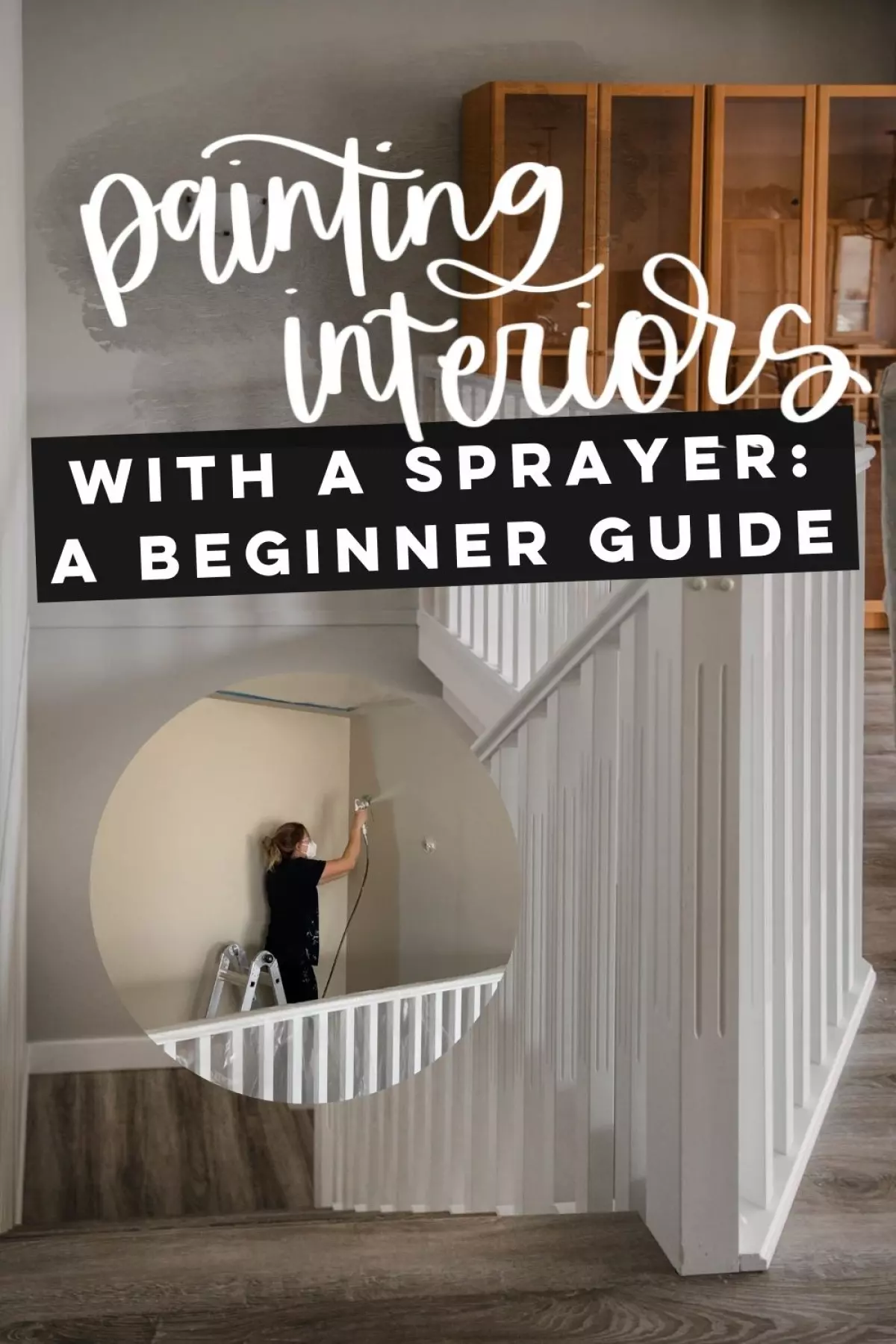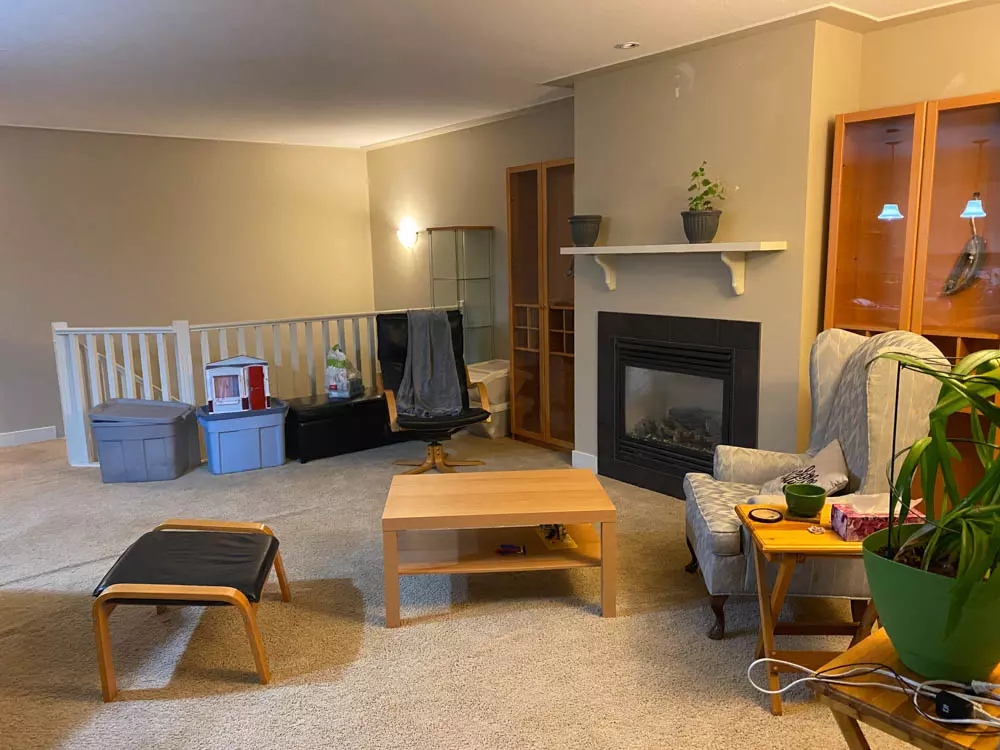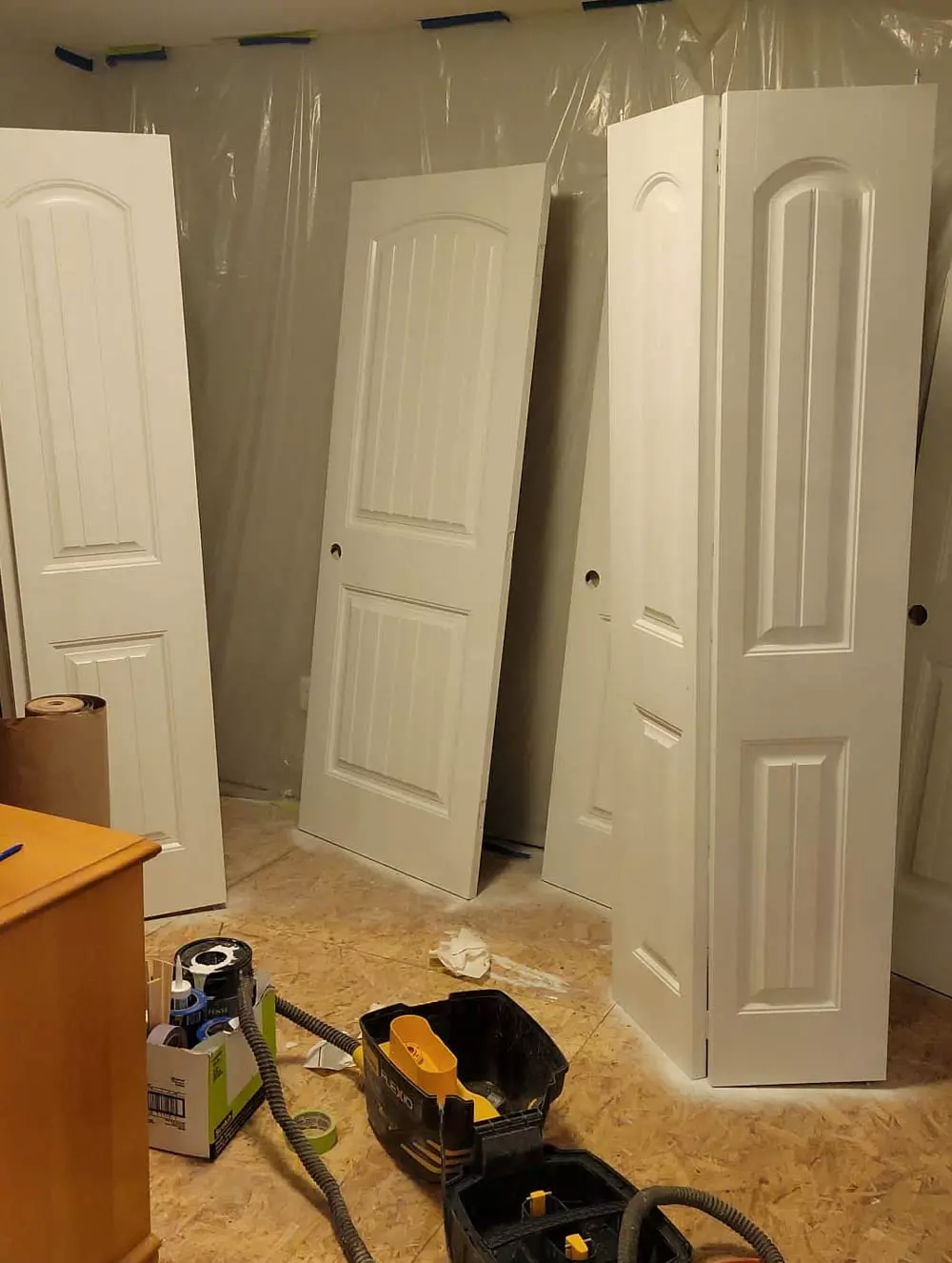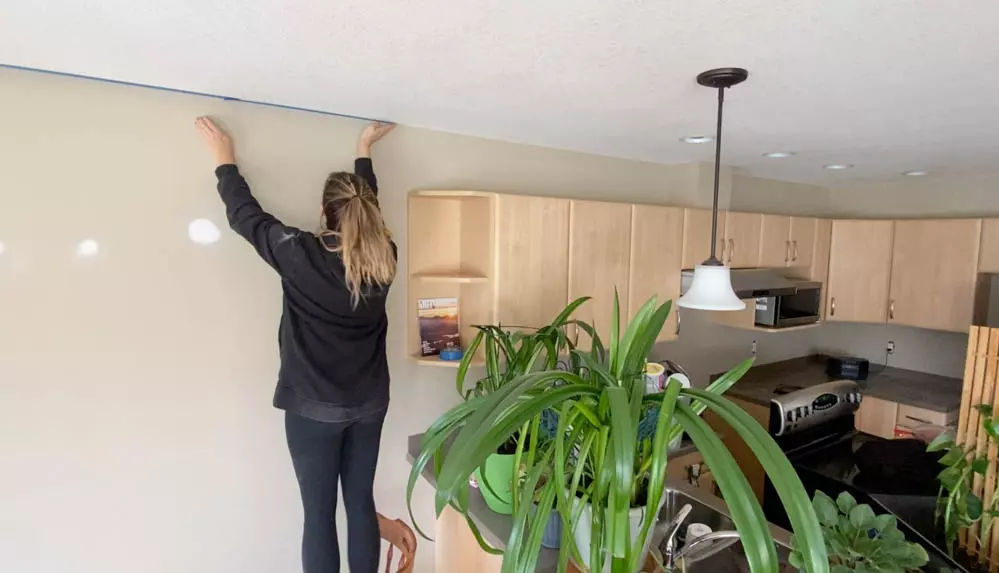Introduction
Are you considering painting your interior walls with a sprayer? It may seem like a daunting task, but fear not! In this beginner's guide, we will cover everything you need to know to successfully complete your project. From prepping the walls to choosing the right sprayer and dealing with cleanup, we've got you covered. So, put on your paint clothes and get ready to transform your space!
 Painting interior walls with a sprayer
Painting interior walls with a sprayer
Prepping Walls for Painting with a Sprayer
Before you start painting, it's important to properly prep your walls. Here are some steps to follow:
-
Wash the walls: Use a mixture of TSP and water to quickly wipe the walls, removing any dirt, cobwebs, or grease.
-
Remove fixtures: Take off any electrical covers, hooks, or other fixtures that you don't want to get painted. It's best to remove them rather than taping them off.
-
Patch holes and dents: Use drywall putty to fill in any holes or dents in the walls. Once dry, sand the patches lightly to ensure a smooth finish.
-
Remove caulk lines: If you've removed the baseboards, remove the caulk lines off the wall using a flat putty knife. Patch any damage to the drywall with drywall putty.
-
Dust and vacuum: Wipe away any dust on the walls with a dry cloth and vacuum up any drywall dust from patching off the floor. This is crucial to prevent dust from being blown around by the sprayer.
 Patching holes in the wall
Patching holes in the wall
Masking for Painting Interior Walls with a Sprayer
Proper masking is essential when painting with a sprayer to protect surfaces you don't want to be painted. Here's how to do it effectively:
-
Mask floors: Use flooring paper to cover and protect the floors. Tape it down around the edges, ensuring it stays in place.
-
Mask trim: Mask the floor and baseboard separately. Place paper on the floor and tape plastic over the baseboard. This allows for easy removal of the plastic for painting the baseboards later.
-
Mask windows and doors: Focus on getting a straight line by taping firmly on the edge of the trim. Then add plastic, tucking it under the tape and pressing it onto the face of the trim.
-
Mask doors: If you plan to paint the doors, consider removing them from the hinges. Otherwise, mask off the doorway with overlapping pieces of plastic for easy access.
-
Mask ceilings: Create a crisp line where the walls meet the ceiling by placing tape around the perimeter of the room. Then apply plastic with a stronger painter's tape along each side of the room.
 Masking floors with paper
Masking floors with paper
Choosing the Right Sprayer for Interior Walls
When it comes to choosing a paint sprayer for your interior walls, you have two main options – High Efficiency Airless (HEA) sprayers and High Volume Low Pressure (HVLP) handheld sprayers. Here's a breakdown of each:
-
HVLP sprayers: These handheld sprayers are easy to use and offer great control. They are perfect for a wide range of projects, allowing you to achieve a fine or heavy finish. They are ideal for beginners and are easy to clean. The Wagner FLEXiO 5000 is a popular choice in this category.
-
HEA sprayers: These sprayers are more industrial in size and style. They hold a larger amount of paint, making them perfect for quick and efficient painting. They offer a thicker spray and are great for larger projects. The Wagner Control Pro 130 is a reliable option in this category.
 Which paint sprayer to use on interiors
Which paint sprayer to use on interiors
Painting Interior Walls with a Sprayer
Now that you have prepped your walls and chosen the right sprayer, it's time to paint! Here are some tips to ensure a smooth and successful painting process:
-
Test your spray pattern: Before painting on your surface, test the spray pattern on a scrap piece of cardboard or flooring paper. Adjust the air pressure and material flow to achieve the desired finish.
-
Choose your spray pattern: You can paint either horizontally or vertically by adjusting the cap of the spray gun. For walls, a vertical pattern is recommended. Overlap each pass slightly to avoid gaps.
-
Watch for drips: To avoid heavy paint or drips at the top and bottom of your wall, spray a little off the wall towards the masked floor and ceiling as you move to your next pass.
-
Keep your sprayer clean: If your sprayer stops working effectively, it may be low on paint or have a buildup of dried paint on the nozzle. Turn it off, wipe it with a cloth, and ensure it's properly cleaned and maintained.
 Tips for painting interiors with a paint sprayer
Tips for painting interiors with a paint sprayer
Time and Paint Savings with a Sprayer
Using a sprayer can save you both time and paint. While it may take longer to mask off surfaces, the actual painting process is much quicker. A room can be painted in as little as 5 minutes per coat, compared to the time-consuming process of rolling and cutting in. Additionally, sprayers tend to use less paint overall, resulting in potential savings.
Cleanup After Painting with a Sprayer
Cleanup after painting with a sprayer is straightforward. You will need to dump any remaining paint back into the can and clean the sprayer. Cleaning a sprayer is not as difficult as it may seem, especially if you follow the instructions in the manual. Proper cleaning ensures the longevity and effectiveness of your sprayer for future projects.
 Painting a townhouse before and after
Painting a townhouse before and after
Now that you have all the knowledge and tips you need, it's time to tackle your painting project. Transform your space with the power of a sprayer, and enjoy the beautiful results. Remember to take your time, follow the steps, and have fun. Happy painting!
Note: This article is based on the original post by Wagner Spray Tech.












